Cryptocurrency Information
Top 2018 Potential Alternative Cryptocurrency Coins & Token Projects
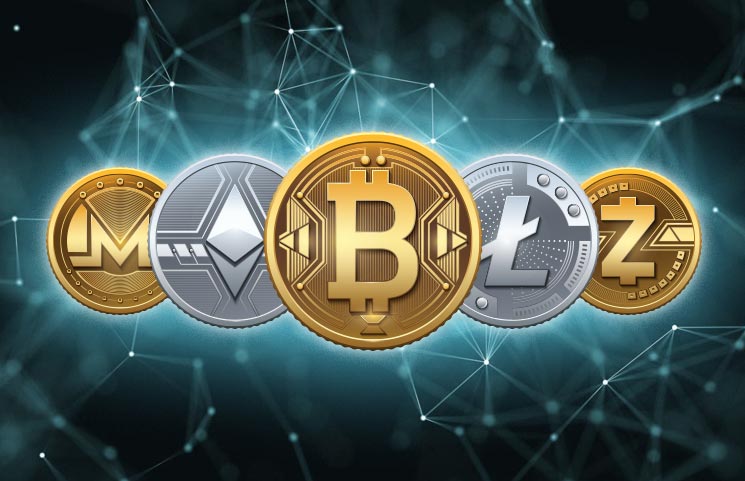
The emergence of the blockchain technology, also known as the “internet 3.0” has brought a lot of benefits to the mankind ranging from identity management to financial transactions. These incredible features of the blockchain have brought tremendous benefits to the early adopters of the technology. One of the major benefits of the blockchain technology is the introduction of cryptocurrencies.
The Bitcoin, being the first cryptocurrency had nearly no value until 2011 and only then started climbing the charts slowly. As at the time of writing this article, the price of BTC is currently hovering around $14252.00, incredible! Only the patient wise investors made the full benefits. However, the Bitcoin itself has some demerits. These include extensive delays in confirmation of transactions and huge transaction fees imposed on the users.
To solve these problems, many coins known as ‘alternative coins’ (or altcoins for short) have been created. An example of these coins the Litecoin. Generally, most altcoins have come to solve the problems created by the bitcoin, or to complement the bitcoin’s technology. Investing in altcoins as digital assets can bring a mind-blowing ROI. Just like the bitcoin where the early investors have made hundreds of millions of dollars.
Altcoins may actually be the future of cryptocurrencies rather than Bitcoin for various reasons including transaction speed and fees. As Bitcoin is priced really high, entry is hard for those new to cryptocurrencies, and altcoins are much cheaper alternatives. If you happen to be one of those that missed out on BTC at its infant, here is another huge opportunity for you to join the train. Investing in altcoins can bring you a fortune you might never have imagined before. Below, we’ll be guiding you through the best ones you can hold onto from over one thousand list of coins listed on the coinmarketcap.
Table Of Contents
Ethereum (ETH)

Ethereum is an open software platform based on blockchain technology that enables developers to build and deploy decentralized applications. Like the Bitcoin, Ethereum is also a distributed public blockchain network. While the Bitcoin blockchain is used to track ownership of digital currency (bitcoins), the Ethereum blockchain focuses on running the programming code of any decentralized application. These apps run on a custom built blockchain, an enormously powerful shared global infrastructure that can move value around and represent the ownership of property. This enables developers to create markets, store registries of debts or promises, move funds in accordance with instructions given long in the past without the risk of a middleman.
Ethereum is amazing because it introduced a different approach from the bitcoin’s protocol. It introduced a protocol that enables developers to create tokens based on it. It made it easier for developers to create their own tokens because they don’t need to create an entire blockchain from scratch. Some of the popular Ethereum tokens are OmiseGo, BAT, and XGT. Ethereum also introduced the smart contracts which is already in use in governments and businesses. The smart contracts is a higher level of abstraction that allows you to set conditions on when an asset is to be sent to the owner, and to whom it is to be sent provided the set conditions are met.
Looking at the team involved in the project, Ethereum is blessed with industry experts who have had experiences with various Blockchain projects. Most especially, the research team is headed by Vitalik Buterin, the young programmer who invented the use of smart contracts. With these great minds behind the project, one can be rest assured that the proposed roadmap will be met, making the platform more wildly used, and as a result, have a huge positive impact on the price.
In terms of market capitalization, Ethereum has a very solid foundation. A sum of $129,988,650,806 has made Ethereum the largest cryptocurrency in terms of market capitalization. There has been a lot of good news for Ethereum which attributed to this market cap increase. The formation and growth of the Ethereum Enterprise Alliance should not be overlooked by any means. At the same time, the underlying technology has been of great interest to many enterprises. Plus, a lot of new innovative tokens and projects are issued on the Ethereum blockchain around the globe. All of these token ICOs reduce the amount of ETH in circulation and bring more prestige to ETH as a whole.
Considering the statistics on the social media, Reddit, Twitter and Bitcoin Forum, the project is supported by millions of individuals willing to utilize the technology. This is another green light that the best is yet to come.
Considering the 24HR trading volume on major exchanges, the volume ranges between a minimum of $100 000 000 to a maximum of over $600 000 000. The shows very strong trading force behind Ethereum.
NEO (NEO)
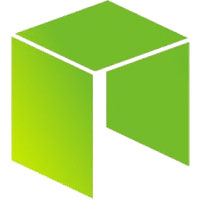
Formerly known as Antshares, Neo is often referred to as “Ethereum of China”. NEO tags itself as a “distributed network for the smart economy”. It’s basically a platform for smart contracts and has a similar functionality as Ethereum. It allows developers to code using C, C#, GO or even Java with the NEO platform, making it easier for developers to create new tokens. NEO is the first decentralized, open-source cryptocurrency and blockchain platform launched in China. The following are some of the use-cases of NEO:
Digital Assets: NEO aims to convert traditional assets into decentralized digital ones using smart contracts protected by law using digital certificates on the blockchain.
Digital Identity: NEO enables the creation of multi-factor authentications mechanisms for identity information of organizations, individuals, and entities in electronic form.
Smart Contracts: The NEO’s Universal Lightweight Virtual Machine (NeoVM) has the advantage of high certainty, high concurrency, and high scalability for smart contracts based on the blockchain. Unlike other smart contract platforms, you need not learn a new smart contract language. If you are a developer using C#, Java, or any other mainstream programming language, you can get started right away to code smart contracts.
The NEO token has a hard cap total of 100 million tokens which will be used in block creation, network management, network changes, and other consensus requirements. These 100 million tokens were all pre-mined during the genesis block creation. As at the time of writing, the market capitalization of Neo is $9,140,560,000. This means the coin is a bullion coin, therefore making it difficult to be manipulated. Also, one unique thing to note is that NEO is unlike other cryptocurrencies in the fact that it is not divisible; the smallest unit will always be 1.
The main community members include the founder – Da Hongfei, co-founder and core developer – Zhang Zhengwen, and other community developers, operators, and contributors, all of whom have a very strong technical background in their respective positions. If the team should continue with their full the dedication to the project, we can expect the project to meet all the plans in the roadmap, and consequently, lead to a significant increase in the price of the coin.
Considering the data generated from the social media, the discussions on the topic neo is on the increase by 62%. This means the project is becoming more popular every day.
With the minimum trading volume of $118k to over $179 million, one can deduce that traders are getting more attention to Neo.
Stellar Lumens (XLM)

Being the native digital asset of the Stellar network, the distributed blockchain based ledger facilitates cross-asset transfers of value, including payments.
Stellar.org, the organization that supports Stellar, is centralized like Ripple and meant to handle cross-platform transactions like Ripple. However, Stellar.org is non-profit and their platform itself is open source and decentralized. Being a close substitute for Ripple, the Stellar network has faster transaction speeds and considerably low fees when compared to Ripple. This makes Lumens a cryptocurrency to watch out for moving forward. Keep in mind though, its low price relative to other cryptocurrencies speaks at least in part not to it being underrated, but to its high supply.
Stellar was created to be a financial payment platform to allow movement of money across borders quickly and reliably at a very low cost. Integrating into the XLM network gives anyone access to an open, global financial network, making everyone involved have equal access and economic participation. Some use-cases of XLM include:
- Remittances: Stellar overcomes the problems often associated with the speed of transaction. This allows people to send money across borders quickly at a cheap rate.
- Large coverage: Stellar cuts transaction cost to allow both the banking population, .and to cater for the underbanked. This means that those of the unbanked can finally achieve a level of service typically only applied to the banked.
The NEO token has a total supply of 103,610,058,900 XLM, this volume can be considered okay when compared to the supply volume by other cryptocurrencies.
Stellar is blessed with varieties of experts from the industry with many years of experiences and full dedication. Also, there’s a group of advisors supporting the project, and some other organizations like Google.com, FastForward, and BlockRock.
According to the data generated from different platforms, at least, the project is being mentioned every 19 minutes. This shows the level of adoption of the project and the interest of the masses in the project.
XLM is trading between a range of $10,000 to $124,000 on major exchanges.
Cardano (ADA)

Cardano is also a fully open source decentralized public blockchain project. Cardano is developing a smart contract platform which seeks to deliver more advanced features than any protocol previously developed. It is the first blockchain platform to evolve out of a scientific philosophy and a research-first driven approach. The development team consists of a large global collective of expert engineers and researchers.
A major innovation of Cardano is that it will balance the needs of users with those of regulators, and in doing so combine privacy with regulation. The vision for Cardano is that its new style of regulated computing will bring greater financial inclusion by providing open access for all to fair financial services.
The structure of Cardano is built on the Cardano settlement layer (CSL) which stores and accounts for value and is a standalone blockchain with a token called ADA. the Ada cryptocurrency can be used to send and receive digital funds. This digital makes it possible to achieve fast and direct transfers that are guaranteed to be secure through the use of cryptography.
Using Cardano blockchain, developers can build a complete financial stack using the CSL and CCL, designing ingenious applications to stimulate a new decentralized economy.
Unlike the Bitcoin, Cardano operates a type of constitution, providing a means of agreeing upon change within a stable framework, where token holders can vote on how to change the protocol, capturing stakeholder intent and reducing the potential for fragmentation. Updates to the software need to be made through soft forks since governance has been carefully designed to allow every ADA holder take part.
There are three basic organizations that contribute to the development of Cardano. Namely; The Cardano Foundation, IOHK, and Emurgo. The Cardano Foundation’s core mission is to standardize, protect and promote the Cardano Protocol technology with the goals of aggregating, educating and growing the Cardano community. Emurgo will identify, aid and invest in early-stage blockchain companies that build applications on Cardano, While IOHK is contracted to design, build, and maintain the Cardano platform.
Looking into the roadmap, the developers are working tirelessly day and night, designing and testing the platform’s structure. It is believed that once launched the CSL and CCL Protocols are launched in the first quarter of this year, users will be able to transact and trade ADA on the fully functional, standards-compliant blockchain. Also, developers will be able to set up a custom environment to build decentralized applications on Cardano.
The social media growth has amazingly achieved an average of 32 seconds per mention, and still counting, evangelizing the technology and educating the people with the use-cases of the project.
Considering all these positive signals, it is believed that the project is going to be a huge success, and as such cause a moon in the price of ADA. With the current market cap of $18,047,341,187, if the milestones are successfully achieved, the price of 1 ADA is expected to grow to $10 and above through the end of this year.
IOTA (MIOTA)
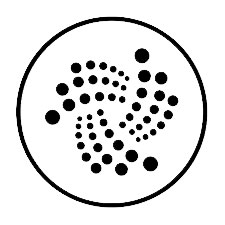
IOTA is a cryptocurrency designed for the Internet of Things. Unlike other traditional blockchains, IOTA is scalable, decentralized, modular, and requires No fees for transaction.
Unlike the Bitcoin which uses a blockchain architecture for maintaining its ledger, IOTA uses the ‘Tangle’ which is a Directed Acyclic Graph, known as a DAG.
The Tangle is a blockless distributed ledger which is scalable, lightweight and makes it possible to transfer value without any fees. Tangle solves both the scalability and transaction fee issues faced by most cryptocurrencies by requiring the Sender in a transaction to perform a kind of proof of work which approves two transactions. The act of making and validating transactions are coupled, removing dedicated miners and makes the system fully decentralized. – those making transactions (the systems ‘users’) are the only actors who can affect the system (whereas in bitcoin miners are not ‘using’ the system, rather they are simply enabling it to operate).
Unlike many other cryptocurrencies which get slower with increased numbers of users as a result of miner’s confirmations, IOTA network transaction speed increases as the number of users increases, eliminating the need for users to pay ‘miners’ for doing the proof of work.!
To prevent most attacks especially the DDoS, IOTA as a data and settlement layer is able to create a system that relies on decentralization, data actuality, and temper proof algorithms.
The developer team consists of Alon Elmaliah and Alfred Keller, both are erudite professionals with many years of experiences in their respective fields. Some of the huge promises in the roadmap including Core Clients Development, Alternative Clients, Automated Snap Shotting, and Extension Interface Module are being accomplished.
The ratio of the positive mentions to the negative mentions on the social media is 7:1, implying that the project is being widely discussed, which is a positive signal with respect to its acceptability.
MIOTA has a current Market Cap of $8,551,363,892. If the rapid increase in the project completion is stable, the price of each MIOT can be predicted to be 20$ – 25$ before the end of the year.
Monero (XMR)
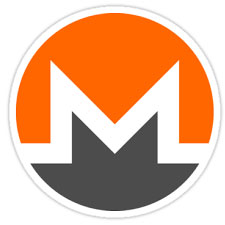
Monero is an open source cryptocurrency that has a focus on privacy, decentralization, and scalability. It is a secure, private, and untraceable cryptocurrency. Monero allows you to have complete control over your transactions. Using Monero, you are responsible for your money because your identity is private and no one will be able to see what you are spending your money on. Another interesting property that it gains, thanks to its privacy, is that it is truly fungible, that is, It has good changeability with other individual goods or assets of the same type.
Monero is headed by a group of 7 developers of which 5 have chosen to remain anonymous while two have come out openly in public. They are David Latapie and Riccardo Spagni aka “Fluffypony”. The project is open source and crowdfunded.
As of writing, there is 15,624,576 XMRin circulations and each Monero is worth $402.21. The total market cap of Monero sits at $6,284,423,084 USD. XMR is projected to reach a price of $1000 before the end of the year.
EOS

EOS is claimed to be the most powerful infrastructure for decentralized applications. It is scalable, flexible, and usable for self-describing interfaces. Just like Ethereum in building decentralized applications, EOS goes further to building scalable decentralized applications in a public environment.
One of the key difference between EOS and Ethereum is in the blockchain consensus mechanism and overall blockchain governance approach. Whereas Ethereum uses Proof-of-Stake, EOS uses Graphene technology that utilizes the Delegated Proof-of-Stake (DPOS) consensus mechanism.
Another significant difference between EOS and the Ethereum network is in the design philosophy behind the networks. The Ethereum network is specifically designed as a neutral platform for all potential applications. This notion reduces bloat among applications, but it also requires many different applications to reuse code, and efficiency gains for app developers could certainly be realized if certain more common functionalities were provided by the platform itself.
In contrast to this approach, EOS recognizes that many different applications require the same types of functionalities and seeks to provide those functions, such as implementations of the cryptography and app/blockchain communication tools needed by many applications. With this philosophy, EOS introduced a generalized role-based permission, a web toolkit for interface development, self-describing interfaces, self-describing database schemes, and a declarative permission scheme.
Also, with Ethereum, gas fees are required in exchange for almost every operation. Furthermore, the required fees fluctuate and can spike prohibitively high as miners preferentially select transactions with the largest fees, this model requires developers and startups to continuously burn gas fees throughout development and deployment of their applications.
Contrarily, EOS utilizes an ownership model, in which holding EOS tokens gives users a proportional share in the network bandwidth, storage, and processing power, allowing small startups and developers to purchase a relatively small part of the network in order to receive reliable, predictable network bandwidth and computing power, and simply purchase more EOS tokens when they need to scale up their application.
The EOS GitHub page for the project shows 42 contributors, headed by Dan Larimer, a famous developer in the cryptocurrency community. He also gave a start to the BitShares system featuring a decentralized exchange, as well as Steemit, a social media platform based on the Steem token.
During the last couple of months, EOS has gained popularity over the social media, with an average mention of 37 sec.
With the total supply of 900 million and a market cap of over 9 billion, EOS is expected to touch $100 before the year-end.
SIACOIN

Sia is a distributed cloud storage platform, ultimately liberating unused storage space. The basic idea is that instead of renting storage from a central bank of servers, as is the norm with traditional cloud-based platforms, peers on the Sia platform rent space from each other via its ‘distributed cloud storage platform, using erasure coding and an independent blockchain with tokens called Siacoins to support the network.
The promise of Sia is a decentralized network of data centers that, taken together, comprise the world’s fastest, cheapest, and most secure cloud storage platform. Currently, cloud storage services like Google cloud, Amazon, and Microsoft cloud are centralized and the data is stored on a third-party server. With Siacoin, the storage would be decentralized as each user would contribute their own share of resources.
Compared to other decentralized storage platforms, what sets SIA apart is lies in the intricate details relating to maintaining the decentralized ecosystem. Unlike most other decentralized cloud service platforms, Sia is private, highly redundant, and offers a competitive marketplace, all at a very affordable price.
In addition, if you want to contribute your personal storage space to the platform for reward, you simply select the storage folder you would like the files to get sent to and click “the announce button” to let announce your available space to others for file hosting. For security reasons, the files will be encrypted so the host won’t be able to tell what kind of data users are hosting on his machine.
Considering the roadmap laid by the team on Trello, the best is yet to come to Sia. The roadmap consists of both long-term and short-term goals including; Video streaming, automatic host pricing, Ability to set prices vs performance preferences, scaling the renter to support >10tb of files at a time, files sharing with non-Sia users, support for mobile wallets and other lite clients, ability to recover file from an outdated backup of the renter directory.
Sia is backed by the Nebulous development team which contains a core team of five industry people all determined to see Sia succeed. Nebulous’ focus is reliable, decentralized infrastructure to help bring forward the future and Sia is the primary project of the Nebulous team.
The members of the team include; David Vorick a talented developer with many years of experience as a software developer before taking the reins at Nebulous where he is an instrumental component in the management of the Sia project. Luke Champine, a specialist in writing software to re-decentralize the internet, and many others with varieties of disciplines in search, machine learning, sensors, and mobile technologies.
The data collected from the social media reveals that Siacoin is gaining more popularity these days. The average time per mention is 5 mins, and the ratio of positive mentions to negative is 6:1. This means people are becoming more educated about the project.
The total market cap of $1.6 billion with 147 million daily volume shows the interest of the masses in the project. Hopefully, if the milestones are being met as specified in the roadmap, the price is expected to reach a minimum of $10 by the end of this year.
Kyber Network (KNC)
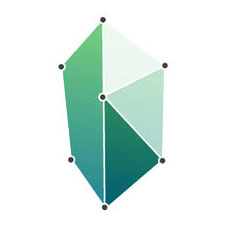
Kyber Network is a platform for converting and exchanging digital assets. It provides users with rich payment APIs in addition to the new contract wallet, which will let you receive payments via any token no matter who you are. Additionally, Kyber has derivative trading to let users minimize the risk of cryptocurrency price fluctuations.
The platform is created in response to multiple factors, including the risks of centralization often known with most exchanges. The existing decentralized exchanges come with their own problems, such as a vulnerability to external hacking or manipulation.
Kyber Network ensures every single operation occurs with smart contracts making it secure and trustless. Because of this, there is no need to trust the platform, as it never holds the money of users. The platform delivers instant trades with no need to wait for a confirmation or complete a deposit. Instead, users get their tokens as soon as the transaction enters the blockchain.
The platform is able to deliver instant trading capabilities because of its high reserve of all tokens, which allows for liquidity. Kyber is also highly compatible, working with the current smart contracts so you do not need to change anything to start using the platform.
The team behind Kyber includes Loi Luu, a researcher specializing in cryptocurrencies, distributed consensus algorithms, and smart contract security, Yaron Velner, a Ph.D. holder in computer science with a focus on game theory incentives within blockchain protocols plus formal verification for smart contracts, and Victor Tran, as the lead engineer and executive advisors including Vitalik Buterin, the co-founder of Ethereum.org.
Since the launch of the testnet in August 2017, many outstanding successes have been achieved. It is expected that the first mainnet launch will occur during the first quarter of 2018. At this point, it will support trading between ETH and tokens. Following the road map, it is expected that, by the second quarter of 2018, Kyber will support the trading of arbitrary token pairs. These features will continue in quarter three with the addition of support for trading advanced financial instruments.
With the current marketcap of over 5.15million provided the milestones specified are met, the minimum price of one KNC is expected to be $20.
ETHOS

Ethos is otherwise known as “The people-powered cryptocurrency platform”. It empowers users to Unlock the future of investment. The purpose of the platform is to make the daunting cryptocurrency market accessible to everyone, accelerate adoption of blockchain technology and democratize ownership of cryptocurrencies. Ethos harnesses the power of design, technology, and social intelligence to create a breakthrough solution that will enable everyone to participate in the New Economy.
Ethos offers universal wallet that displays both super-powered digital currency dashboard that meets social network. Ethos empowers the user with the complete control of his assets at all time. Being “Universal” means there’s no need to keep track of multiple wallets and private keys. The user can rest assured his cryptographic assets are safe, secure and always available anytime anywhere.
Ethos is blessed with a team of talented experts from the industry. The brains behind the project include:
Shingo Lavine, a globally recognized expert and thought leader in cryptocurrency and blockchain technologies, Ellen Jiang, a talented UI/UX designer with both technical and creative abilities. She has previously worked at Pixar as a technical director intern in the Pixar Undergraduate Program and is a researcher for the Brown Graphics Lab, Maurice Herlihy, a renowned mathematician with his Ph.D. in computer science from M.I.T. He has achieved numerous awards both in mathematics and computing. He oversees the Blockchain & Smart Contract Technology, and Kevin Saechew, an active participant in the cryptocurrency community, and many other experts with experiences from wide varieties of industries.
Mentions on the social media show that the ethos is being mentioned at least every 24 seconds. This shows the rate at which the project is getting more popular amongst the masses.
The present price of $6.85 looks bearish considering the total marketcap. The project is very promising, and the team behind it is dedicated to its success. The expected price of Ethos by the end of the year should be above $50.
NEM

Nem is the world's first Smart Asset blockchain technology that delivers a world-class platform for management of almost any kind of asset. NEM allows developers to build and deploy secure blockchain applications in little or no time. The NEM public blockchain provides an open and self-scaling platform for developers.
NEM has many interesting applications including:
Asset Transfer
One of NEM’s key advantages is its ability to seamlessly interface between public and private blockchains. This means users can transfer cryptographic assets from a private network through the public blockchain, giving users to perform both intra and inter-transfer of assets.
Equity Markets
Considering the difficulties often experienced equity markets, the NEM blockchain technology is a suitable core component to re-design the equity market ecosystem which could save the industry billions of dollars in operational expenses on yearly basis.
Escrow Services
The smart asset blockchain allows NEM to form the basis of escrow services. You can set up trustless accounts to manage transfers of currency, tokens, data, or any other assets. You can also set a minimum number of digital signatures (up to 32) required before a transfer executes.
Liquid Asset
The total supply of XEM is fixed, meaning there will never be inflation. The protocol has been designed to require a small transaction fee, ensuring demand for XEM coins over time. Also, users also need XEM to pay for token creation, encrypted messaging and other features. This makes XEM a good liquid store of value.
Supply Chain Management
With the design of NEM’s blockchain to require a small amount of fee, whenever a customer places an order new parts are automatically ordered to begin replacing that inventory. Every action in the supply chain process is automatically generated and documented and becomes immutable in real time, allowing savings and better performance in just-in-time delivery.
Encrypted Messaging
The alarming rate at which message encryption is being compromised is a big concern almost everybody is trying to solve. Messages sent through the NEM Blockchain can be natively encrypted using the user’s private key to ensure authenticity and privacy while maintaining security.
Land Registry
The NEM blockchain is ideal for tracking land and property ownership and rights. Whether you are an owner, leaseholder, government representative, mortgage holder, escrow service, or broker, you can access all registered information in one place, including a complete chain of custody, inspections, tax valuations, liens, environmental liabilities, and everything else needed for real estate transactions.
Voting
Hacking and manipulation of votes have been from the greatest problems in electronic voting. With the smart Asset Technology implemented by NEM, votes can’t be tampered with since there’s a permanent and complete record of every entry and change. It’s appropriate for governments and institutions that require automation, speed, security, and transparency of voting records.
Other use cases include ICOs, stock ownership, assess controls, and many others, limited to the user’s imaginations.
The NEM Foundation, brains behind NEM is compiled of a group of people with a wealth of experience in IT, entrepreneurship, business processes, trading, property and asset development, international management and academia. The team provides support and education, from training events and service providers to technical support for the ecosystem to the new talented individuals coming into the project.
NEM has gained popularity on the social media with the reach of 72% to the population on the social networks.
The current marketcap of $10,056,779,999, and the promising roadmap ahead, the expected price of NEM at the end of Q4 2018 is a minimum of $15.

BitShares is a decentralized exchange built using the latest in industry research. It offers a stack of financial services including exchange and banking on a blockchain. The BitShares platform is run and maintained by an open consortium of individuals and organizations committed to providing universal access to the power of smart contracts called the BitShares community.
Bitshares offers wide varieties of use cases including but not limited to:
Decentralized Asset Exchange: BitShares provides a high-performance decentralized exchange, with all the features you would expect in a trading platform.
Performance and Scalability: With Delegated Proof of Stake, the BitShares network can confirm transactions in an average of just 1 second, limited only by the speed of light.
Flexible withdrawal permissions: BitShares is built with support for recurring payments and subscription payments. This feature allows users to authorize third parties to make withdrawals from their accounts within certain limits.
The core members of the BitShares include Daniel Larimer, Charles Hoskinson(now a member of Ethereum.org) and Stan Larimer.
The popularity and adoption of the platform are on a rapid increase, considering the data from the social media, BitShares has an average of 25 seconds per mention.
Considering the total market cap of $1,026,366,252 USD, and the price at $0.371163, touching the lower resistance level, BTS is a good buy, and the price is expected to grow to $5 at the Q4 of this year.
VeChain (VEN)
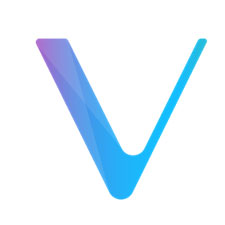
VeChain is one of the leading blockchain platforms that offers Blockchain-as-a-Service (BaaS) to enterprises for products and information, by leveraging on blockchain technology, using scalable, trust-free and distributed smart contracts.
The platform focuses on building a trust-free and distributed business ecosystem by enabling the flow of information and values at high-speeds through collaboration with enterprises. VeChain is strongly backed by the VeChain foundation. Additionally, VeChain offers API for developers for developers, enabling them to extend VeChain services to their applications.
The objective of setting up a governance structure of the VeChain foundation is for the consideration of the sustainability of the VeChain platform, and to manage risk and the efficient operation of the platform economy. The team is led by a group of industry experts including but not limited to:
Sunny Lu, an IT expert who has held various positions in companies including BitSE, Louis and Vuitton China to mention a few.
Other members include; Kevin Feng, the information systems expert, Bin Quan, the director for Blockchain development; Richard fu, the marketing director, Jie Zhang, the financial director, Jiang Liang gu, and Gerome grilleres, all with a wealth of experiences in the industry.
Considering the data gathered from the social media, VeChain is scored 32 seconds avg. per mention.
With the tremendous success of the team at VeCahin, the VeCahin token, VEN is currently ranked 20th position on the coinmarketcap at $2.025 billion with a volume of $304 million per day. If the milestones specified on the roadmap are met at the proposed time, with the total circulating supply of less than a billion VEN, the price of one VEN is expected to be trading at $50 at the Q4 of the year.
Cryptocurrency Information
Bitcoin Volumes Finally Grow Again and Bitfinex/Tether Issues Spark Systemic Risks, New Diar Report Affirms
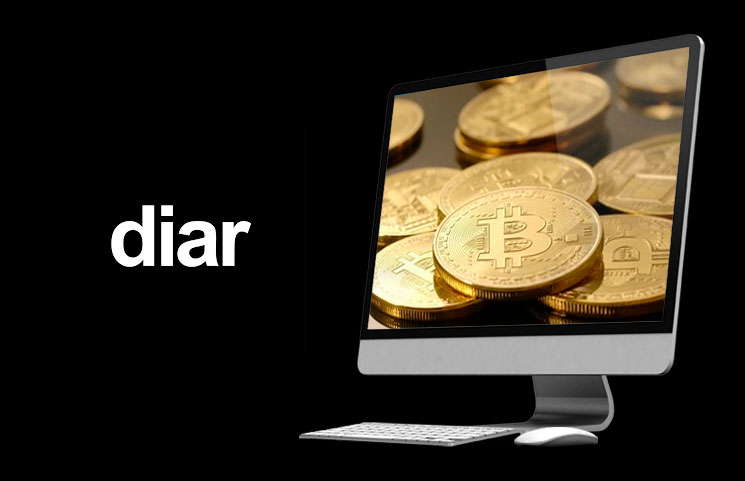
Diar has recently published its report of the crypto market for April. According to the company, Bitcoin volumes are finally growing again and the whole situation with Tether and Bitfinex showed the industry some of its systemic risks. DAI fee hikes and stablecoin projects were also highlighted in the report.
Bitcoin Goes Back To Growing Again
The main highlight of the month is, obviously, that Bitcoin is back on the action. After facing lows which started in 2018, the token has finally been able to effectively reverse the trends and have an actual price surge this month, going from less than $4,200 USD to over $5,200 USD during this short timeframe.
With this, the number of on-chain transactions has spiked for three months in a row, since prices started to get some of their value back in March and April. Now, transaction volumes are around their levels in June 2018 when the price of the asset was around $7,000 USD.
However, charts indicate that Bitcoin is yet to find more footing outside of speculative trading, so the bull market may not be as near as some think.
When looking at the volume of the whole quarters, Q1 2019 had lower volumes than Q4 2018, but Q2 2019 started considerably well.
Bitfinex and Tether Start Concerns of Systemic Risks
As you may have heard, Bitfinex was accused of using Tether funds to cover up its losses. According to Diar, there is a 26% shortfall of in-cash reserves to back Tether tokens (USDT). Tether loaned $850 million USD to Bitfinex to cover up losses and its general counsel Stuart Hoegner has affirmed that the company is operating with fewer reserves than the total market cap of the token.
This happened because Bitfinex had the $850 million USD “seized” by Crypto Capital, one of its payment processors. Unless Hoegner is lying, though, the company had the assets to back the stablecoin until recently.
While it is clear now that Tether simply does not have the money to back the funds, people simply keep buying the tokens. Now, instead of all cash, some shares of Bitfinex are being used to represent the rest of the value, which makes the stablecoin enter securities territory for the first time.
Curiously, the markets are all very tolerant now since the prices are still stable but the systemic risks are clear, especially if other companies are to follow Tether’s path.
DAI Hikes Fees Once More
Another situation highlighted by the reports is that DAI has decided to upgrade its stability fees once again as the community is desperately trying to make the prices of the so-called stablecoin go up again. DAI tokens are being sold for less than $1 USD, their official price, on secondary markets.
At the moment, the fees are 16.5%, after increasing three times in only one month. Before April, the fees were only 7.5%. This has resulted in a decrease of 4.9% in the circulation of DAI tokens.
Stablecoins Eye Wider Use Cases
Gemini and Harbor, a A16Z tokenized securities platform, have started a partnership in order to get more clients for the Harbor stablecoin. However, this was deemed “too soon” by Diar, as Harbor does not have any known token right now. The only one the company had was canceled.
TrustToken is also trying to get more stablecoins on its list, especially the ones that are not focused on USD, but on several other fiat currencies like HKD, CAD or GBP instead.
Cryptocurrency Information
#DropGold Campaign to Hit Your TV, Here’s A Breakdown of the Underlying Bitcoin Message(s)

Grayscale, a leader in digital currency investing, launched an ad on Wednesday, May 1, telling investors that money should be contributed to Bitcoin holdings as opposed to gold. In a number of interviews, CEO of Grayscale’s parent company (Digital Currency Group), Barry Silbert and Managing Director of Grayscale, Michael Sonnenshein, have since expressed the underlying message of the ad.
The #DropGold Ad
According to news outlet, U Today, the ad starts off with a man holding gold bars in his arm, which he decides to drop. While doing so, a woman also does the same. Throughout the ad, people supposedly have their gold bars stacked in shopping carts, while “losing their gold coins.” Watching what’s about to unfold, the two individuals try to find their way out.
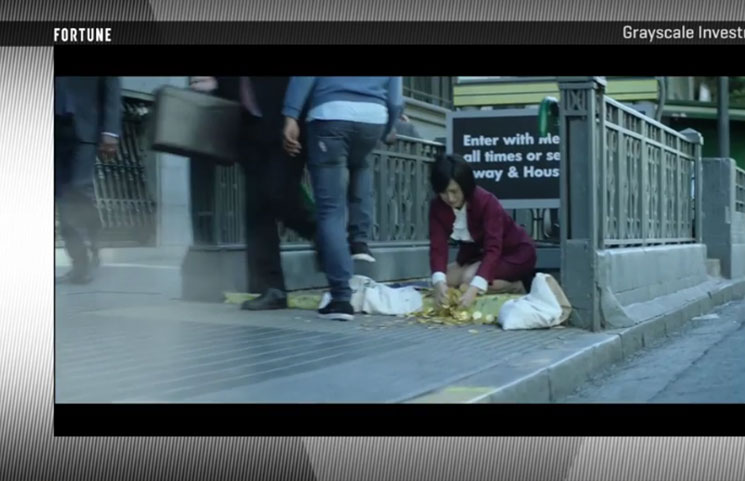
Advertising Bitcoin or Grayscale’s Services?
Despite being the one to have introduced this campaign, Silbert argues that it isn’t entirely about Grayscale services, but rather said services being a result of consumers’ decision. Yahoo Finance has since quoted the following comment made by Silbert himself:
“We do not see this as a Grayscale commercial. For us #DropGold is our ‘Got Milk’. This campaign is first and foremost focused on starting a conversation about bitcoin vs gold. If the ad makes people want to get into Bitcoin, we’re completely indifferent about how they go about doing it.”
Having said this, the commercial is evidently portraying Grayscale as an option, as towards the end, one is told, “Go Digital. Go Grayscale.”
Silbert’s and Sonnenshein’s Arguments Regarding Gold’s Limitations
Silbert believes that this campaign works towards addressing the fact that Bitcoin can serve as an equal asset class as gold, if not better. In particular, he was quoted saying, “But now you have Bitcoin, which, in our opinion, provides all the same attributes as gold – it’s fungible and scarce and you can’t counterfeit it – but the big difference is that Bitcoin has utility. Gold doesn’t have much utility beyond jewelry.”
He further argued that the goal here isn’t to replace fiat currency for shopping purposes, but rather to show the world that Bitcoin does a better job at doing gold’s job and this will be evident in the long run. Although he has acknowledged Bitcoin’s volatility as being concerning, he is hopeful that it will one day serve as both an ideal utility token and store of value.
As for Sonnenshein’s viewpoint, he sees this ad as revealing the “absurdity” associated with gold. More specifically, he said:
“We’re going after a narrative around gold being where investors should go when markets turn south or as a hedge against inflation […] we’re highlighting the absurdity of gold.”
As per The Block Crypto, Grayscale also tries to convince investors that the return earned from redistributing 5% of gold to Bitcoin will be greater than 5% yearly.
What are your overall thoughts on this ad? Did it leave you asking yourself, “Why did you invest in gold? Are you living in the past?” Share your thoughts below!
Cryptocurrency Information
Huobi Pro Bitcoin Exchange: Cryptocurrency Asset Trading Platform?
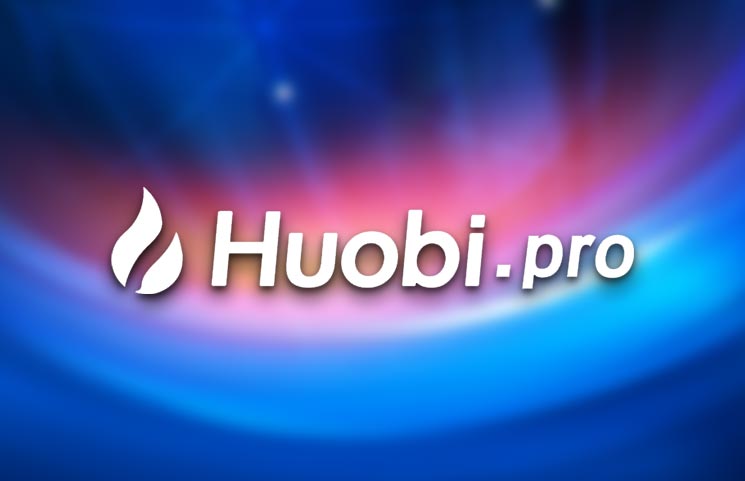
Huobi Pro Cryptocurrency Exchange
Founded in 2013, Huobi Pro allows for a myriad digital currencies to be exchanged, at a 0.2 percent trading commission. Loyal users point to the low fees and stellar service that make the exchange stand out above others.
Although pitched at dedicated cryptocurrency enthusiasts since the site doesn’t accept fiat currencies many who enter the realm on the back of fiat end up at Huobi Pro, largely due to its diverse offering and favorable fee structure.
Huobi Pro in A Nutshell

A victim of China’s clampdown on digital currencies, the company might be registered in the Seychelles, but was originally founded in Beijing. As testament to the broad appeal of the platform, after the Chinese regime effectively banned all things crypto at the beginning of 2018, trading volumes have only grown.
While at first very much a Chinese company looking at the home market, Huobi Pro has been forced to find a wider marketplace on the international scene. Indeed, even prior to the official cessation of altcoins and their trading, the company heard the rumblings in 2017 and took its cryptocurrency interests abroad.
Huobi now provides exchange services to users in over 130 countries. Company offices are located in the USA, Korea, Japan, Singapore and Hong Kong. Although the Huobi Group also owns and manages the Huobi Autonomous Digital Asset Exchange (HADAX), Huobi Pro is more of a pure “login and trade” exchange.
Users can employ network tokens to cast votes on adding new altcoins on HADAX. On the Huobi Pro exchange, a simplified offer encompassing all of the mainstream altcoins greets visitors. Some more popular coins offered are Bitcoin (BTC), Bitcoin Cash (BCH), Ethereum (ETH), Litecoin (LTC), NEM (XEM), NEO (NEO), Qtum (QTUM) and Ripple (XRP).
That said, when one actually tallies the number of altcoins available for exchange, it becomes apparent why loyal followers value the site. A marriage of both simple ease of use and diversity in trading, the platform is largely welcomed by newcomers and experienced enthusiasts alike. In the current melee of regulation being contemplated, implemented and tweaked all the while, some users may be precluded from trading on the exchange based on their country of residence.
Huobi Pro accepts the funding of accounts only in digital currencies, and accepts deposits in any of its listed altcoins. Unlike other exchanges that have opted for a midway between crypto and fiat, Huobi Pro traders deal strictly in digital coins at every point of a transaction. Funds need to be withdrawn to a wallet, and fiat users looking to buy in will have to establish a wallet first in order to fund their Huobi Pro trading account.
Traders pay a maker or taker fee of just 0.02 percent using the exchange. There are more detailed offers, worth looking at for daily traders with volume.
Huobi Pro Membership Levels
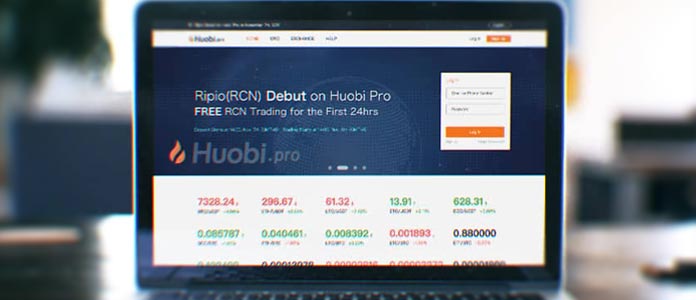
VIP users get preferential platform trading fees if they buy the privilege with Huobi tokens. The Huobi Token (HT) was never an ICO token, but rather a system token that users only obtain by buying “Point Cards” on the Huobi Pro platform. Point Card is essentially a pre-paid Huobi card that keeps users liquid on service fees. One HT = 1 USD, therefore one “point” = 1 USD. The more points purchased, the more free points are added, although savings on 1000 points, for example, means only 10 HT for free.
Huobi Global minted a fixed total of 500 million tokens, with 300 million employed to facilitate the in-house VIP structure. A mark of the business group behind the platform is seen in their practice of buying back-sold tokens from the open market each quarter. Not only that, but those funds go towards the Huobi Investor Protection Fund (HIPF).
This is a planned fund that will compensate investors who suffer platform disruption and subsequent losses. It’s a tool that minimizes risk, smooths out the market overall and also goes towards protecting investor interests. This transparent and pleasing aspect of the platform is one reason traders have confidence in the exchange, and its popularity is rising worldwide.
By way of example, in order to glean a VIP status, a trader will pay 120 HT a month for First Level membership. This enables a 20 percent discount on trading fees. Running through toward the top end, a pricier option of 6,000 HT a month secures a 50 percent discount on fees. Overall, a diligent trader can optimize the system and come out with a substantial discount on the already low 0.02 percent base offer.
The company charges no fees to deposit funds, but there are withdrawal fees. Although there are reviews online listing withdrawal fees, it appears that, especially within the membership structure, users are advised to ascertain exact fees when establishing their account. Likewise, transfer limits need to established upfront to avoid disappointment later. There exist order size limits on the platform too, again becoming more malleable as one moves up the ranks of the VIPs.
Security And UX On Huobi Pro

All of the standard protocols including two-step Google Authenticator verification are at play on the platform. Unlike many other exchanges that offer a simple crypto-exclusive platform, Huobi Pro will need your personal details in the form of a passport copy and chat room comments are not devoid of complaints, although almost all of them take issue with the structure of the platform and its potential pitfalls. There are few allegations of lost funds or other negligence on behalf of the company. On the whole, Huobi Pro seems to be rubbing off its decidedly corporate ethos onto the exchange – good news for traders overall.
Another serious boon for the cryptosphere as a whole is that over 98 percent of holdings are stored in an offline cold wallet or vault. Imbued with a strict customer service ethic, the platform probably sports the best customer service to date for crypto exchanges. Available 24/7 365, there is a live chat option onsite.
The platform intel is sufficient although newbies might have to scratch to paint a clear picture of how exactly everything works. The FAQs are thoughtful and, again, testament to a polished offering. Huobi used to be one of the biggest Chinese crypto exchanges, based in Beijing. Started by entrepreneur Leon Li in 2013, since the move there has been mutual appreciation of its value. Worldwide users have taken to the exchange, as it too realized that it had global appeal.
Huobi Pro Conclusion

Huobi claims to have exceeded BTC 500,000 in daily trading approaching 2014. Although only in its fifth year, that’s a long time in cryptocurrency. Although frequently accused of embellishing trading volumes, these allegations have never been proven. In comparison to other digital exchanges that have suffered persistent user complaints and even been shut down due to criminal activity, Huobi Pro shines.
As an offering, it has low fees, great diversity and an unbeatable crypto-energy. No trader on the platform feels like they’re missing out on something else somewhere else, by most accounts. Possibly due to their prior involvement in the fintech world, the platform got it right first time around and user numbers prove it. The company Huobi also owns another trading platform, BitYes, more focused on USD/BTC and USD/LTC pairs trading. Great customer service and minimal technical glitches have made it appear positively top-tier, again in comparison to less polished outfits.
With a detailed offering, great client liaison – very unusual for most digital exchanges so far – and no legitimate proof of anything even vaguely dark hanging about them, the Huobi Pro project is recommended. Users are advised to always ascertain costs prior to trading – not hard with the customer support in this case – and sample a platform with small trades before trading greater amounts. To learn more, you can head to their official website: huobi.pro










